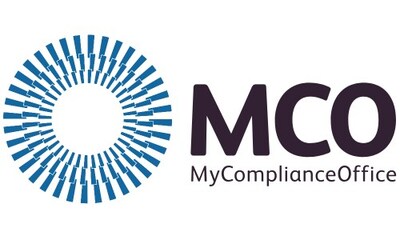By C200 Member Maryann Bruce
The link between sports and leadership isn’t just anecdotal; it’s proven
Lalena Kennedy via Canva
When I first stepped onto the pool deck as a young swimmer, I was nervous, ambitious, and determined. I never imagined that the lessons I learned staring at the black line at the bottom of a lane would one day prepare me for the boardroom.
Years later, those lessons took me from local meets to becoming a New York State champion, a Junior Olympian gold medalist, and a two-time bronze medalist — and eventually into leadership at the highest levels of business.
Looking back now, I realize that almost everything I know about leadership began in the water. The habits that shaped me as an athlete are the same ones that strengthen leadership and drive organizational success.
As an athlete, I learned how to push through pain, manage competing demands, and perform under pressure. Those experiences shaped how I lead and make decisions today. They taught me to prepare deliberately, execute with discipline, and stay composed when the outcome matters most.
The Data Behind Athletic Leadership
The link between sports and leadership isn’t just anecdotal; it’s proven. A study by Ernst & Young and espnW found that 94 percent of women in the C-suite played sports, with more than half competing at the collegiate level. A 2023 Deloitte survey reported that 69 percent of women earning over $100,000 annually and working in leadership roles have an athletic background.
The habits athletes develop — preparation, resilience, focus, and teamwork — directly translate into the skills that define effective leadership. The connection is clear when you look at some of the most successful women in business.
Meg Whitman, former CEO of Hewlett-Packard and eBay, competed in multiple varsity sports at Princeton. Indra Nooyi, former CEO of PepsiCo, played competitive cricket in college in India. Susan Wojcicki, former CEO of YouTube, was a Division I swimmer at Harvard. Each credits her athletic experience with shaping her leadership style.
These examples reveal a truth that every former athlete understands: the lessons that develop strong teams and consistent performance in sports are the same ones that build strong organizations and confident leaders.
Performance Carries Over from Sports into Leadership
Athletic success drives executive success. Both arenas depend on preparation, adaptability, and the ability to learn from every experience. Here are six performance-focused skills that connect sports and leadership:
1. Purposeful Use of Time: Athletes know that every practice, every drill, and recovery session serves a purpose. High performance depends on how you use the minutes between goals, not just the moments on the scoreboard.
The best leaders also focus their time on what matters most. They set priorities, reduce distractions, and stay intentional about where they put their energy. Time is the one resource that cannot be replaced; how you use it determines the quality of your results.
2. Embracing Data: Sports today run on analytics, from wearable tech to film study. Every metric tells a story about performance, consistency, and potential.
Business leaders rely on data much the same way to sharpen performance and guide decisions. But collecting information is only the starting point. The real impact comes from interpretation and action. Athletes who study feedback and adjust their strategies improve. Leaders who approach data similarly turn insight into advantage.
This mindset extends to AI as well. Many organizations adopt it to save money or speed up processes. That may improve efficiency, but not necessarily foster innovation. The real opportunity lies in using AI to do better things, not just do things better.
3. Resilience and Adaptability: Every athlete faces setbacks such as a tough loss, an injury, or a moment of doubt. The best learn to recover and move forward stronger than before.
True resilience involves more than endurance. It requires awareness and adaptability. In business, things rarely unfold precisely as planned. Markets fluctuate. Products fail. Leaders make mistakes. As the saying goes, “I plan, God laughs.”
The ability to recover, reset, and refocus often separates the good from the great.
4. Teamwork: In every sport, success depends on the strength of the team — winning rarely comes from a single individual. I’ve always loved the acronym T.E.A.M., which stands for “together everyone achieves more.” Great athletes know how to communicate, build trust, and play their part for the benefit of the group.
The same is true in business. The best leaders know when to step forward, when to listen, and how to bring out the best in others. When leaders invest in people first, performance and growth naturally follow.
5. Mastering Recovery:Athletes know you can’t compete at full intensity every day. Rest and recovery are part of the training plan, not a reward afterward.
Leaders need the same discipline. Those who never take a step back eventually burn out. Rest, reflection, and time away from work are not luxuries. They are performance enhancers. And remember: paid time off is not pretend time off. Too many professionals still check emails on vacation or join calls from the beach. That’s not recovery.
Even with unlimited paid time off, many companies still reward constant availability. True recovery requires boundaries and trust. Leaders who prioritize real rest return with a clearer perspective — and inspire their teams to do the same.
6. Lifelong Learning: Elite athletes remain students of their craft. They refine technique, welcome feedback, and stay open to change. Great leaders have the same willingness to evolve.
In my experience working with boards and companies, I’ve learned the importance of immersion. You cannot effectively lead from a distance. Spend time with employees. Listen to customers. Stay close to the business. Those conversations often reveal what data alone cannot.
I also believe in treating feedback as fuel. The most effective leaders don’t wait for formal reviews or outside consultants to tell them what to improve. They seek input early, listen without defensiveness, and use it to grow. Leaders who are open to learning from others, remain curious and adaptable, stay ahead.
From the Pool to the Boardroom
The lessons I’ve learned from swimming are still ones I rely on today. The motivation that kept me training before sunrise now keeps me focused in the boardroom. The resilience that helped me bounce back after a tough race helps me lead through challenges. And the teamwork that carried every relay reminds me how much trust matters when the stakes are high.
When C200 invited me to speak at Vanderbilt University, I thought about my daughter, a professional soccer player. She once told me she didn’t know what she would do after sports because she didn’t believe her skills would transfer into a career. But they will. The focus, discipline, and teamwork she practiced on the field every day will serve her for life.
The playing field may have shifted, but the focus hasn’t. In leadership, success is often judged by IQ — the facts and figures — but the real edge comes from EQ, the ability to understand people and earn trust. You cannot win on data alone, and you cannot lead without the people behind the performance.
Maryann Bruce is a distinguished independent director and former Fortune 100 Division President and CEO with extensive experience developing strategies that drive growth, increase profitability, and enhance shareholder value. She is the former chair of C200 and has been an active member since 2002.
This article was adapted from her keynote at Vanderbilt University, presented through C200’s Reachout Program.









